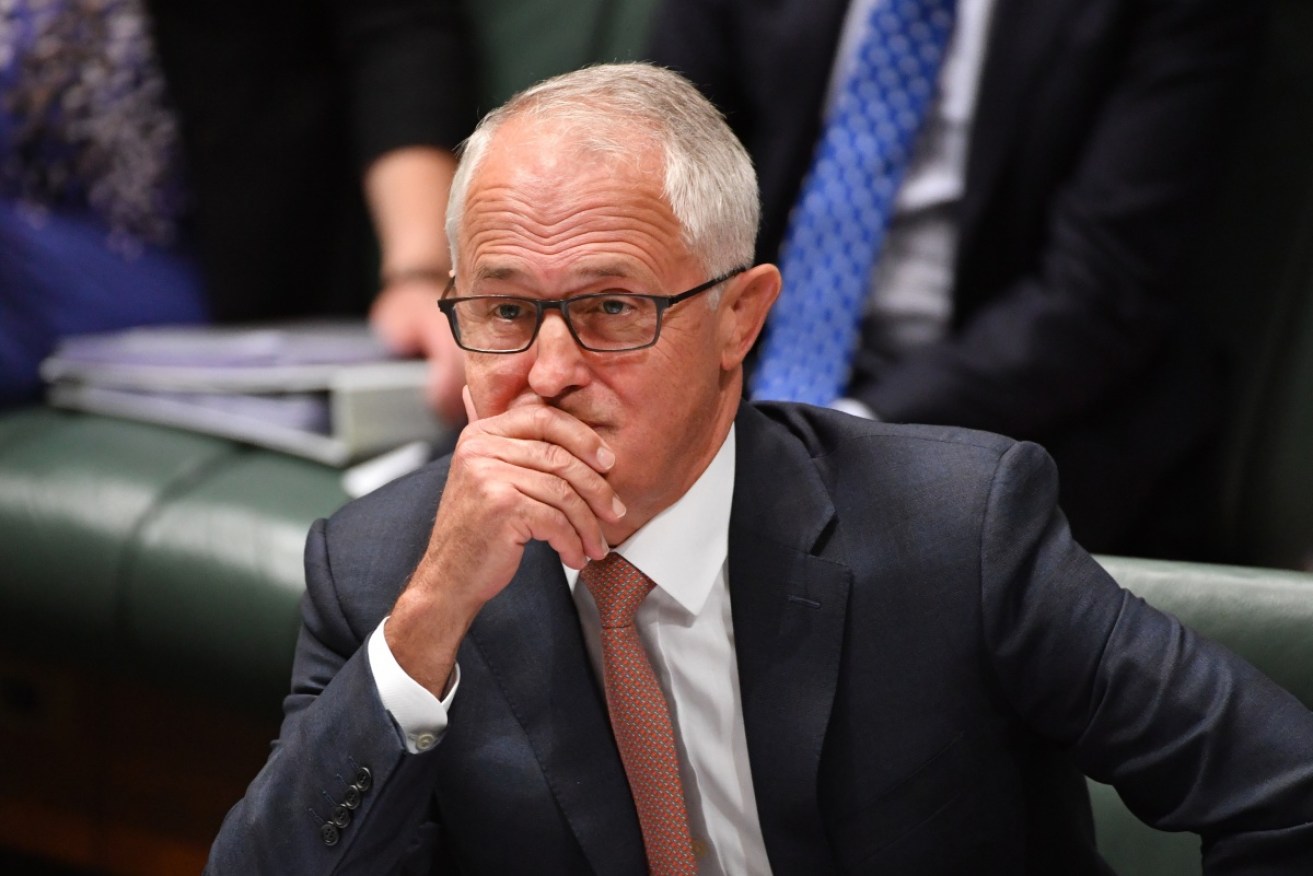Energy politics has Malcolm Turnbull in a tangle


Malcolm Turnbull might be rethinking his attack on renewable energy. Photo: AAP
Malcolm Turnbull playing a Tony Abbott-style energy policy never looked convincing. Now, even he realises that his attack on renewable energy was misdirected.
Worse, it exposed the government’s complete lack of a coherent policy and made them look out of touch with consumer and business sentiment.
The plan was simple last year: the Prime Minister could restore the government’s fortunes by coming up with a contemporary version of Mr Abbott’s carbon tax scare.
The beguiling appeal was to link Labor’s climate change policies to the rising cost of living. The message was simple: vote Labor and your power bill will go even higher.
With his government’s support sliding, an embattled Mr Turnbull couldn’t resist the full-blooded politicisation of South Australia’s statewide blackout last September.
The state Labor government’s encouragement of wind and solar power were to blame, the PM claimed. They were “extremely aggressive, extremely unrealistic and have paid little attention to energy security”.
The base politics of the attack were exposed by the Australia Institute’s FOI that revealed a trail of departmental emails warning the government that the extraordinarily fierce storm, and not renewable energy, was the immediate and sole cause.
Tackled in Question Time on the subject, Mr Turnbull feigned indignation that he had ever even hinted at such a thing.
“Let me be very clear, of course windmills did not cause a blackout,” he told reporters later. “The blackout, as I have said many times, was caused by a storm breaching transmission lines.

Adelaide’s CBD was plunged into darkness for hours during the statewide blackout last year. Photo: AAP
“That is perfectly obvious. That is the only point that was made.”
But he stuck with his argument that a grossly-irresponsible Labor government had not done enough to assure baseload power.
“However, the introduction of a massive amount of wind energy, so variable renewable energy, made the South Australian grid very vulnerable. Very, very vulnerable, indeed, to breaches in transmission lines and the overloading or pressure on the interconnector with Victoria.”
But here the emperor has no clothes. He waxes eloquently about backing new storage technologies and pumped hydro – using renewable energy during the day to pump water to a holding dam that at night falls on turbines. These are being examined but are not part of any broader plan.
That doesn’t yet exist.
On baseload power, at the National Press Club the Prime Minister started talking about “clean coal”. That can only be a reference to carbon capture and storage.
But it is so expensive that investors aren’t interested. The billions needed would have to be stumped up by taxpayers. The promise of an outcome that is cheaper than Labor’s would go up the chimney.

“On this side of the house you will not find a fear of coal,” Treasurer Scott Morrison said in Parliament last week. Photo: ABC
Labor strategists, based on research by the Climate Institute and others, are working up a policy for the next election with the punch line: “Labor will deliver cheaper electricity with less pollution.”
The key is using gas as the baseload power source.
This won’t please the government’s coal evangelists, particularly in the National Party.
As visiting US Republican politician Bob Inglis points out, in America it is not renewables that are bringing down coal. It’s gas. In his home state of South Carolina, three coal-fired power stations have been converted to gas.
The Turnbull attack on South Australia backfired badly with last week’s heatwave. It revealed how appalling the national energy market is.
Labor’s Mark Butler asked Mr Turnbull how he could explain that the highest price rises for electricity over the past decade occurred in the three states with the highest reliance on coal power and the lowest on renewables – New South Wales, Queensland and Victoria.
The PM didn’t even try.
You know the situation is bad when the nation’s biggest energy users like the Australian Aluminium Council, The Australian Steel Institute and the Cement Industry Federation, joined 15 other groups urging the politicians to stop the blame game and come up with a bi-partisan policy that will survive the three-yearly electoral cycle.z
We are a nation running out time, luck and energy. Old coal-fired power stations are reaching or have already reached their use-by date.
Finding the most economic way to replace them with cleaner energy leading to net zero emissions by 2050 seems beyond grubby partisan politics.
One senior Liberal backbencher says only a crisis will break the logjam.
What have we got now?
Paul Bongiorno AM is a veteran of the Canberra Press Gallery, with 40 years’ experience covering Australian politics. He tweets at @PaulBongiorno








